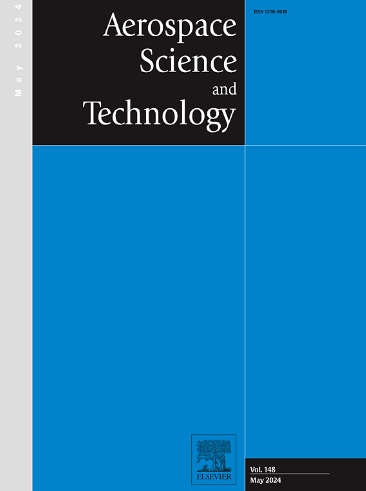Impact of atmospheric turbulence on typical shaped booms
IF 5
1区 工程技术
Q1 ENGINEERING, AEROSPACE
引用次数: 0
Abstract
Accurate sonic boom prediction is crucial for low-boom supersonic civil transports (SST). In the real atmospheric environment, atmospheric turbulence randomly distorts the shape and energy distribution of sonic booms, posing significant challenges in assessing their intensity. Previous studies have focused primarily on N-waves, revealing that atmospheric turbulence can transform N-type waves into P-type and R-type waves. Facing the practical applications in the future, supersonic civil transports must be designed with low-boom methods to minimize their impact on the ground. Additionally, the focused sonic boom generated during supersonic maneuvering flight is another critical consideration. At this time, sonic boom signals warrant attention not only classical N-type wave, but also low-boom waveform such as flattop-wave and ramp-wave, as well as focused waveform such as U-wave. However, the impact of atmospheric turbulence on these shaped booms is not clear. The present work investigates the influence of atmospheric turbulence on shaped booms. Using high-order finite difference time domain methods and high-performance computing, we employed a three-dimensional augmented KZK sonic boom propagation model coupled with an atmospheric turbulence model to simulate the propagation and evolution of shaped booms in the atmospheric boundary layer (ABL). Flight experimental data from D-SEND#1 project was used to validate the present models and numerical methods. Results indicate that atmospheric turbulence has a relatively small distortion on both ramp-wave and U-wave, which is more conducive to low-boom design for supersonic civil transports. Conversely, the atmospheric turbulence has a relatively large impact on distortion of both N-wave and flattop-wave.
求助全文
约1分钟内获得全文
求助全文
来源期刊

Aerospace Science and Technology
工程技术-工程:宇航
CiteScore
10.30
自引率
28.60%
发文量
654
审稿时长
54 days
期刊介绍:
Aerospace Science and Technology publishes articles of outstanding scientific quality. Each article is reviewed by two referees. The journal welcomes papers from a wide range of countries. This journal publishes original papers, review articles and short communications related to all fields of aerospace research, fundamental and applied, potential applications of which are clearly related to:
• The design and the manufacture of aircraft, helicopters, missiles, launchers and satellites
• The control of their environment
• The study of various systems they are involved in, as supports or as targets.
Authors are invited to submit papers on new advances in the following topics to aerospace applications:
• Fluid dynamics
• Energetics and propulsion
• Materials and structures
• Flight mechanics
• Navigation, guidance and control
• Acoustics
• Optics
• Electromagnetism and radar
• Signal and image processing
• Information processing
• Data fusion
• Decision aid
• Human behaviour
• Robotics and intelligent systems
• Complex system engineering.
Etc.
 求助内容:
求助内容: 应助结果提醒方式:
应助结果提醒方式:


